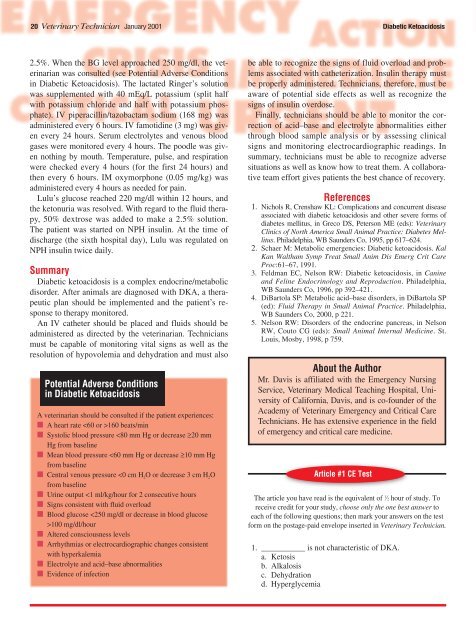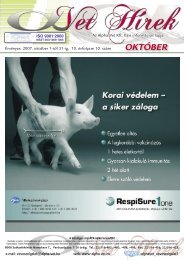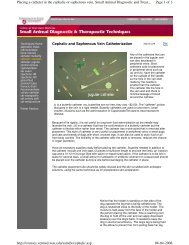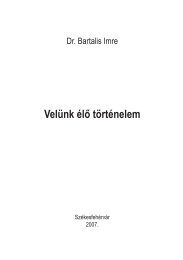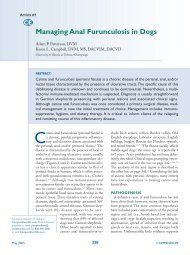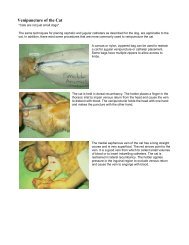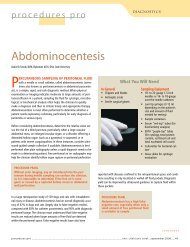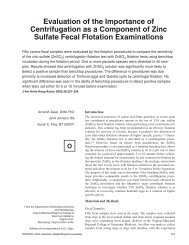Diabetic Ketoacidosis - Hungarovet
Diabetic Ketoacidosis - Hungarovet
Diabetic Ketoacidosis - Hungarovet
Create successful ePaper yourself
Turn your PDF publications into a flip-book with our unique Google optimized e-Paper software.
20 Veterinary Technician January 2001 <strong>Diabetic</strong> <strong>Ketoacidosis</strong><br />
2.5%. When the BG level approached 250 mg/dl, the veterinarian<br />
was consulted (see Potential Adverse Conditions<br />
in <strong>Diabetic</strong> <strong>Ketoacidosis</strong>). The lactated Ringer’s solution<br />
was supplemented with 40 mEq/L potassium (split half<br />
with potassium chloride and half with potassium phosphate).<br />
IV piperacillin/tazobactam sodium (168 mg) was<br />
administered every 6 hours. IV famotidine (3 mg) was given<br />
every 24 hours. Serum electrolytes and venous blood<br />
gases were monitored every 4 hours. The poodle was given<br />
nothing by mouth. Temperature, pulse, and respiration<br />
were checked every 4 hours (for the first 24 hours) and<br />
then every 6 hours. IM oxymorphone (0.05 mg/kg) was<br />
administered every 4 hours as needed for pain.<br />
Lulu’s glucose reached 220 mg/dl within 12 hours, and<br />
the ketonuria was resolved. With regard to the fluid therapy,<br />
50% dextrose was added to make a 2.5% solution.<br />
The patient was started on NPH insulin. At the time of<br />
discharge (the sixth hospital day), Lulu was regulated on<br />
NPH insulin twice daily.<br />
Summary<br />
<strong>Diabetic</strong> ketoacidosis is a complex endocrine/metabolic<br />
disorder. After animals are diagnosed with DKA, a therapeutic<br />
plan should be implemented and the patient’s response<br />
to therapy monitored.<br />
An IV catheter should be placed and fluids should be<br />
administered as directed by the veterinarian. Technicians<br />
must be capable of monitoring vital signs as well as the<br />
resolution of hypovolemia and dehydration and must also<br />
Potential Adverse Conditions<br />
in <strong>Diabetic</strong> <strong>Ketoacidosis</strong><br />
A veterinarian should be consulted if the patient experiences:<br />
■ A heart rate 160 beats/min<br />
■ Systolic blood pressure


